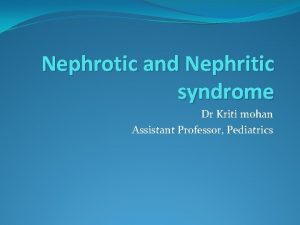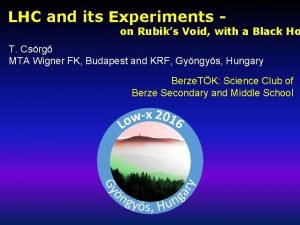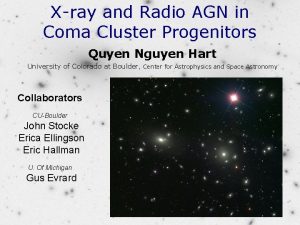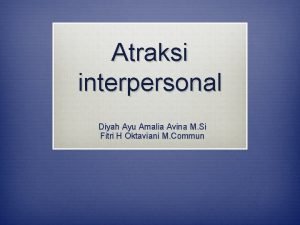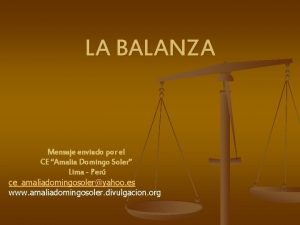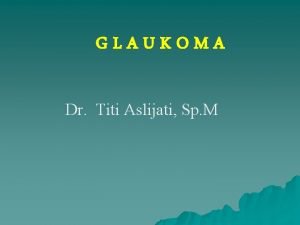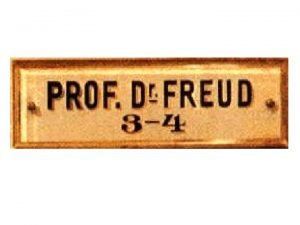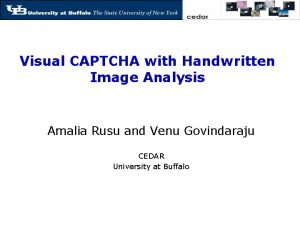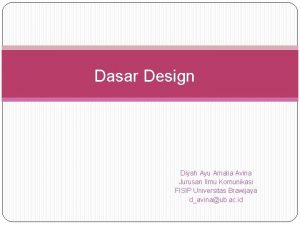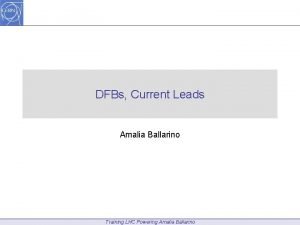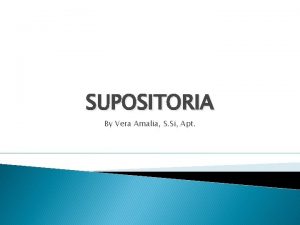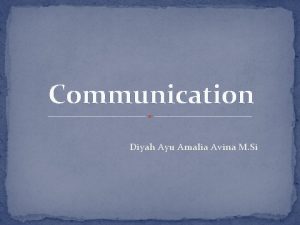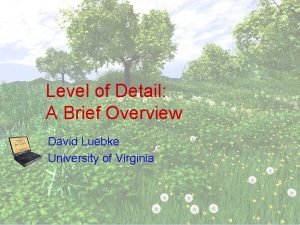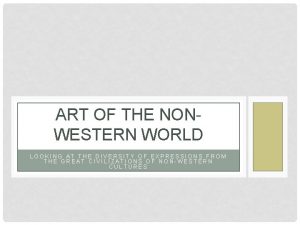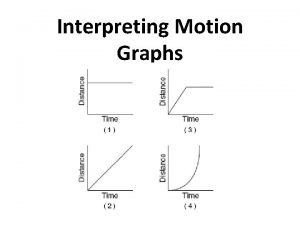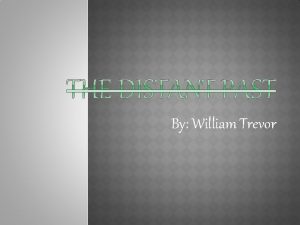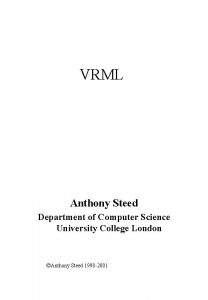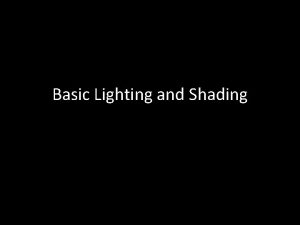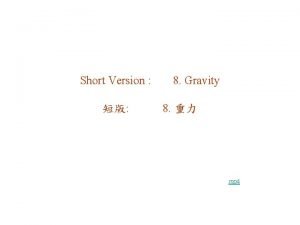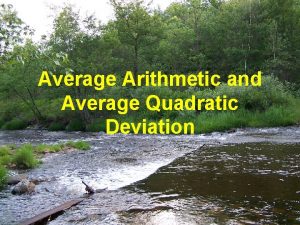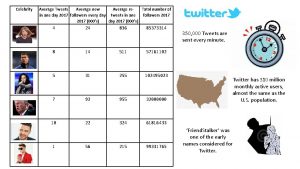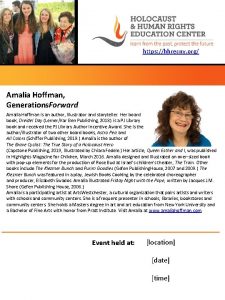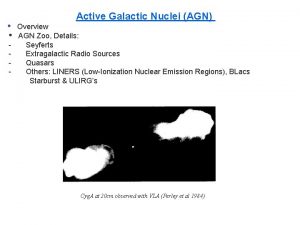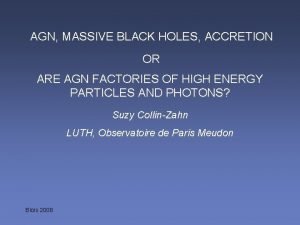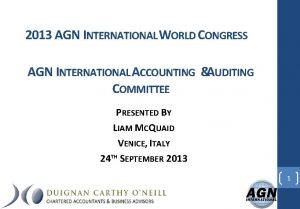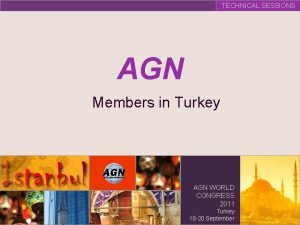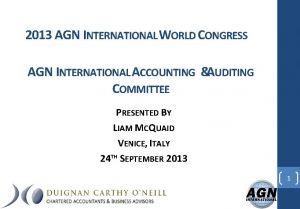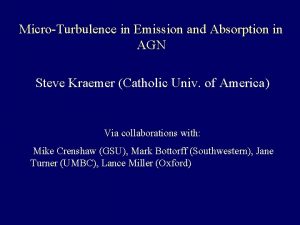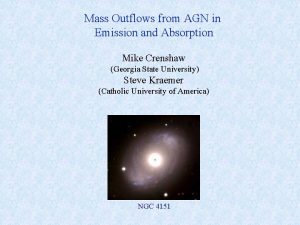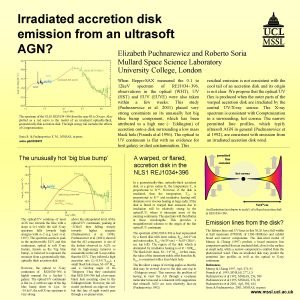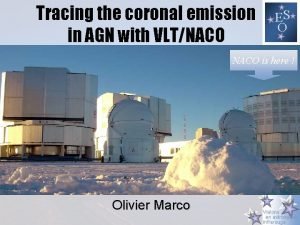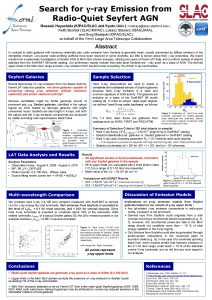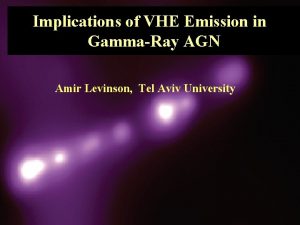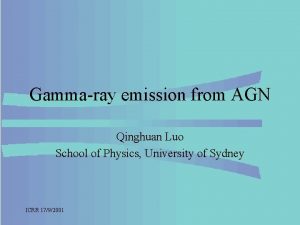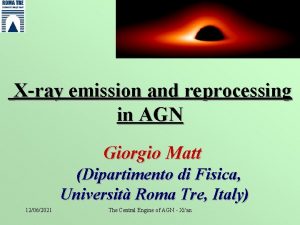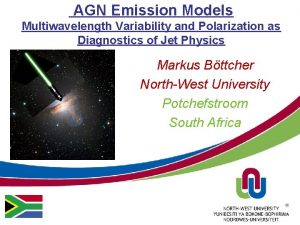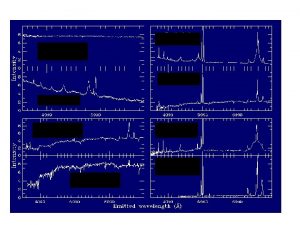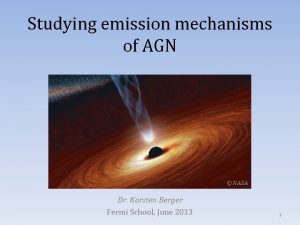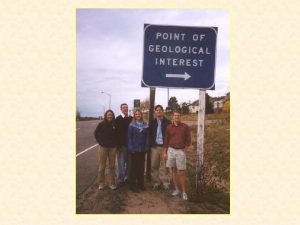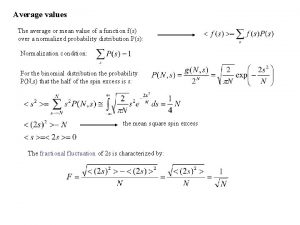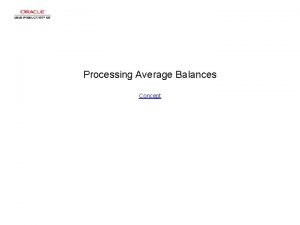Average Fe K emission from distant AGN Amalia



























- Slides: 27

Average Fe Kα emission from distant AGN Amalia Corral IFCA(Santander)/OAB(Milano) M. J. Page: MSSL (UCL), UK F. J. Carrera, X. Barcons, J. Ebrero: IFCA (CSIC-UC), Spain S. Mateos, J. A. Tedds, M. G. Watson: University of Leicester, UK A. Schwope, M. Krumpe: Astrophysikalisches Institut Postdam, Germany X-ray Universe 2008, Granada, 27 th May 2008

Introduction n n Non-rotating known to be BH XRBInclination (X-Ray Background) is composed of discrete sources, most of them angle are AGN. Maximum-rotating BH ingredients : XRB synthesis models, - AGN intrinsic column density and acretion rate distribution and their evolution as a function of Luminosity and redshift. - Average radiative efficiency of accretion onto Supermassive Black Holes -> Measure from Fe line relativistic profile.

Previous Results n n Local samples: EW(relativistic) ~ 100 -200 e. V (Guainazzi+06, Nandra+07) Distant AGN -> average or stack many spectra together: EW(relativistic) ~ 400 (type 1) - 600(type 2) e. V (Streblyanska+05, Brusa+05)

Our sample n n AGN from the AXIS (An International XMMNewton Survey) and XWAS (XMM-Newton Wide Angle Survey) medium surveys (average flux ~ 5 x 10 -14 erg cm-2 s-1). Optical spectroscopic identifications (>80 counts 0. 2 -12 ke. V): Type 1 AGN: 606 sources Type 2 AGN: 117 sources

Our sample n Sample selection: Individual spectra > 80 counts in 0. 2 -12 ke. V

Averaging method n n n Fit an absorbed power law above 1 ke. V restframe and unfold the un-grouped spectra: best-fit model. Correct for Galactic Absorption. Shift to rest-frame. Normalize using the 2 -5 ke. V rest-frame band. Rebin to 1000 final counts/bin. Average.

Results Type 1 AGN > 200000 counts Type 2 AGN ~ 30000 counts Fit simple power law in 2 -10 ke. V : Type 1: Γ=1. 92± 0. 02 Type 2: Γ=1. 44± 0. 02

Results Type 1 AGN > 200000 counts Type 2 AGN ~ 30000 counts Broad relativistic profile not clearly present

Simulations n n 100 simulations (best-fit model) per real spectrum including Poisson counting noise and keeping the same 2 -8 ke. V observed flux, exposure time and calibration matrices as for the real data. Significance contours by removing the 32% (1σ level) and 5% (2σ level) extreme values.

Results ·· 1σ confidence limit -- 2σ confidence limit ● ▪ Simulated continuum Average spectrum

Results ·· 1σ confidence limit -- 2σ confidence limit ● ▪ Simulated continuum Average spectrum

Spectral fit n o o Baseline model: 100 -simulations continuum: mixture of absorbed power laws. Narrow emission line.

Spectral fit – Type 1 AGN n Best-fit model: Baseline model plus neutral reflection: Egaus = 6. 36± 0. 05 ke. V σgaus = 80± 80 e. V EWgaus = 90± 30 e. V i = 60± 20º R=0. 5± 0. 20

Spectral fit – Type 1 AGN n Best-fit model: Baseline model plus neutral reflection: Egaus = 6. 36± 0. 05 ke. V σgaus = 80± 80 e. V EWgaus = 90± 30 e. V i = 60± 20º R=0. 5± 0. 20

Spectral fit – Type 1 AGN n Best-fit model: Baseline model plus neutral reflection: EW(broad relativistic line) < 400 e. V Egauslevel = 6. 36± 0. 05 ke. V at 3σ confidence σgaus = 80± 80 e. V EWgaus = 90± 30 e. V i = 60± 20º R=0. 5± 0. 20

Spectral fit – Type 2 AGN n Model: Baseline model plus neutral reflection: Egaus = 6. 36± 0. 07 ke. V σgaus = 80± 60 e. V EWgaus = 70± 30 e. V i < 80 R > 0. 7

Spectral fit – Type 2 AGN n Model: Baseline model plus neutral reflection: Egaus = 6. 36± 0. 07 ke. V σgaus = 80± 60 e. V EWgaus = 70± 30 e. V i < 80 R > 0. 7

Spectral fit – Type 2 AGN n Model: Baseline model plus Laor line: Egaus = 6. 36± 0. 07 ke. V Elaor ~ 6. 7 ke. V σgaus = 80± 60 e. V EWgaus = 70± 40 e. V EWlaor ~ 300 e. V i ~ 60º

Spectral fit – Type 2 AGN n Model: Baseline model plus Laor line: Egaus = 6. 36± 0. 07 ke. V Elaor ~ 6. 7 ke. V σgaus = 80± 60 e. V EWgaus = 70± 40 e. V EWlaor ~ 300 e. V i ~ 60º

Spectral fit – Type 2 AGN n Model: Baseline model plus Laor line: Neutral reflection and Relativistic Egaus = 6. 36± 0. 07 ke. V line give the same fit E ~ 6. 7 ke. V Elaor ~ 6. 7 ke. V σgaus = 80± 60 e. V EWgaus = 70± 40 e. V EWlaor ~ 300 e. V i ~ 60º

Type 1 AGN: sub-samples n Number of counts 2 -10 ke. V > 2 x 105 allow us to test evolution with different parameters by dividing the sample in 3 subsamples of equality (i. e. number of total counts): redshift, flux and luminosity. n We found no dependence for the emission features on redshift or flux. n Dependence on Luminosity -> Iwasawa. Taniguchi effect?

Type 1 AGN: sub-samples L(0. 5 -2 ke. V) (erg s-1) EW narrow line (e. V) 1 x 1042 – 2 x 1044 190± 50 2 x 1044 – 6 x 1044 150± 80 6 x 1044 – 6 x 1046 50± 40

Conclusions n n n Narrow emission line significatively detected in Type 1 and Type 2 AGN average spectra. E ~ 6. 4 ke. V, EW ~ 100 e. V. Type 1 AGN: No compelling evidence of a Broad component in the average spectrum. Continuum features best represented by a reflection component. Relativistic line upper limit EW<400 e. V (3σ confidence). Iwasawa-Taniguchi effect for narrow line component marginally detected. Type 2 AGN: Statistics insufficient to distinguish between a relativistic line and a reflection component.

Conclusions n n n Narrow emission line significatively detected in Type 1 and Type 2 AGN average spectra. E ~ 6. 4 ke. V, EW ~ 100 e. V. Type 1 AGN: No compelling evidence of a Broad component in the average spectrum. Continuum features best represented by a reflection component. Relativistic line upper limit EW<400 e. V (3σ confidence). Iwasawa-Taniguchi effect for narrow line component marginally detected. Type 2 AGN: Statistics insufficient to distinguish between a relativistic line and a reflection component.

Conclusions n n n Narrow emission line significatively detected in Type 1 and Type 2 AGN average spectra. E ~ 6. 4 ke. V, EW ~ 100 e. V. Type 1 AGN: No compelling evidence of a broad component in the average spectrum. Continuum features best represented by a reflection component. Relativistic line upper limit EW<400 e. V (3σ confidence). Iwasawa-Taniguchi effect for narrow line component marginally detected. Type 2 AGN: Statistics insufficient to distinguish between a relativistic line and a reflection component.

Conclusions n n n Narrow emission line significatively detected in Type 1 and Type 2 AGN average spectra. E ~ 6. 4 ke. V, EW ~ 90 e. V. Type 1 AGN: No compelling evidence of a broad component in the average spectrum. Continuum features best represented by a reflection component. Relativistic line upper limit EW<400 e. V (3σ confidence). Iwasawa-Taniguchi effect for narrow line component marginally detected. Type 2 AGN: Statistics insufficient to distinguish between a relativistic line and a reflection component.

THANK YOU
 Ncp for agn
Ncp for agn Dr kirti mohan
Dr kirti mohan Agn rubik's cube
Agn rubik's cube Agn
Agn Diyah ayu amalia avina
Diyah ayu amalia avina Le puedo dejar un mensaje a amalia
Le puedo dejar un mensaje a amalia Dr titi amalia
Dr titi amalia 6 may 1856
6 may 1856 Amalia rusu
Amalia rusu Amalia cut
Amalia cut Amalia kerfstedt
Amalia kerfstedt Diyah ayu amalia avina
Diyah ayu amalia avina Amalia ballarino
Amalia ballarino Keburukan peg sebagai basis suppositoria adalah
Keburukan peg sebagai basis suppositoria adalah Competing messages in communication
Competing messages in communication Amalia klavdija
Amalia klavdija Tumulo de amalia rodrigues
Tumulo de amalia rodrigues Lod example
Lod example Peace is not merely a distant goal
Peace is not merely a distant goal Bare willows and distant mountains
Bare willows and distant mountains Interpret motion graphs
Interpret motion graphs Distant past tense
Distant past tense Distant
Distant Distant
Distant Trusted officer of odysseus
Trusted officer of odysseus Distant retrograde orbit
Distant retrograde orbit Specific objectives of teaching mathematics
Specific objectives of teaching mathematics Dares to claim the sky meaning
Dares to claim the sky meaning

